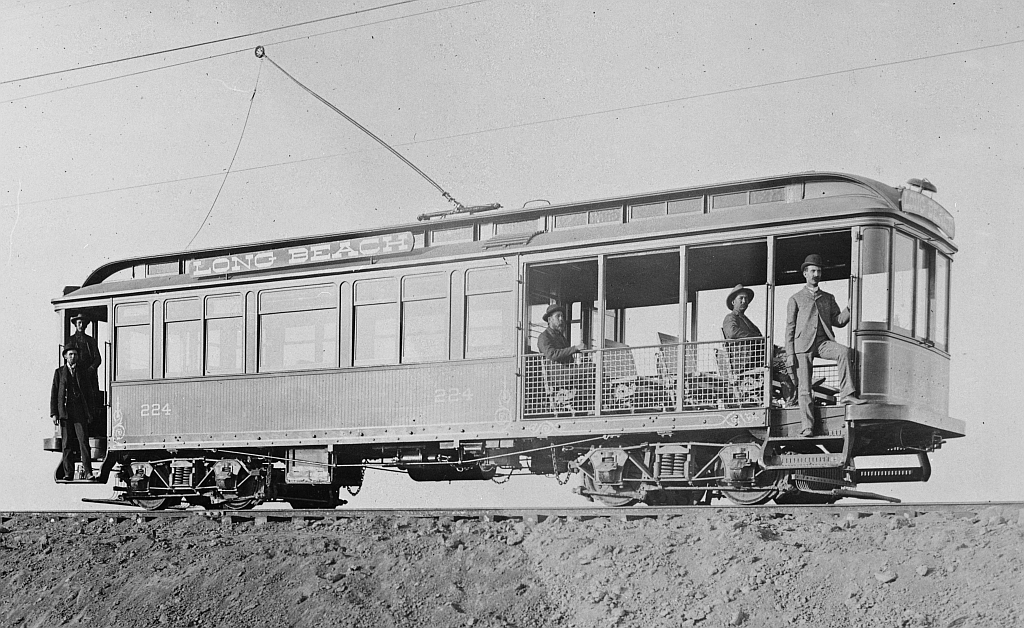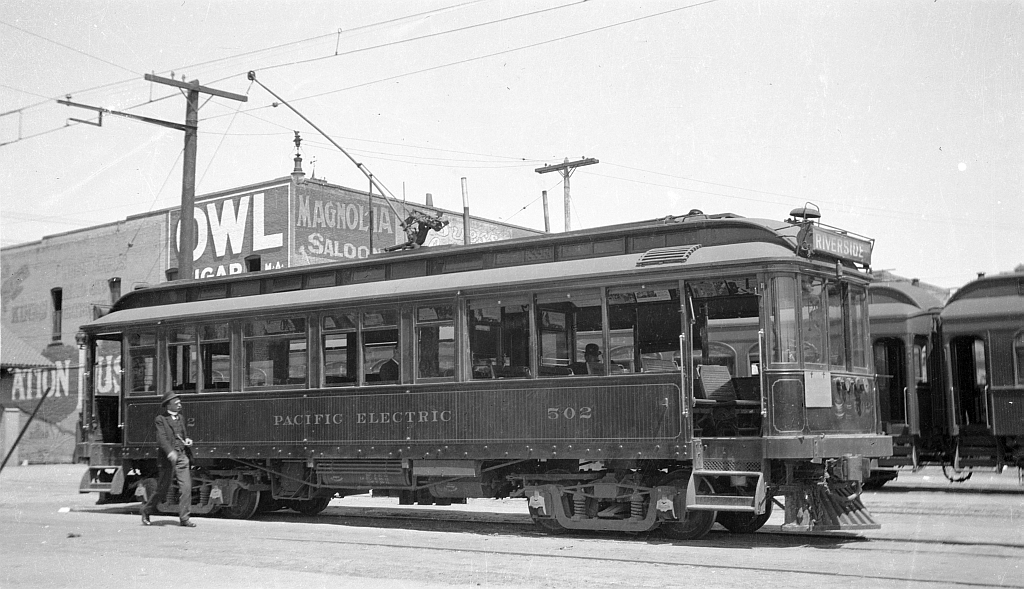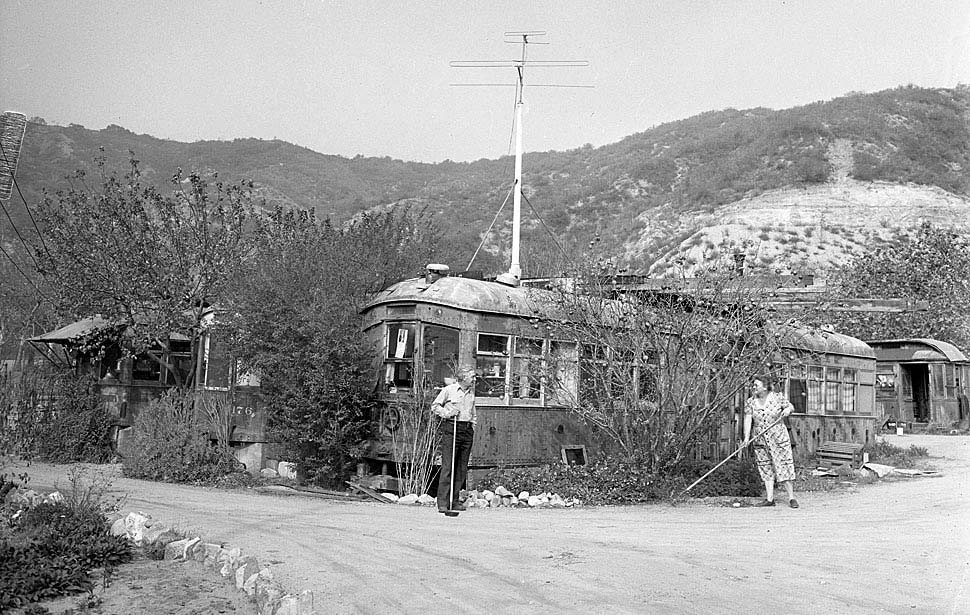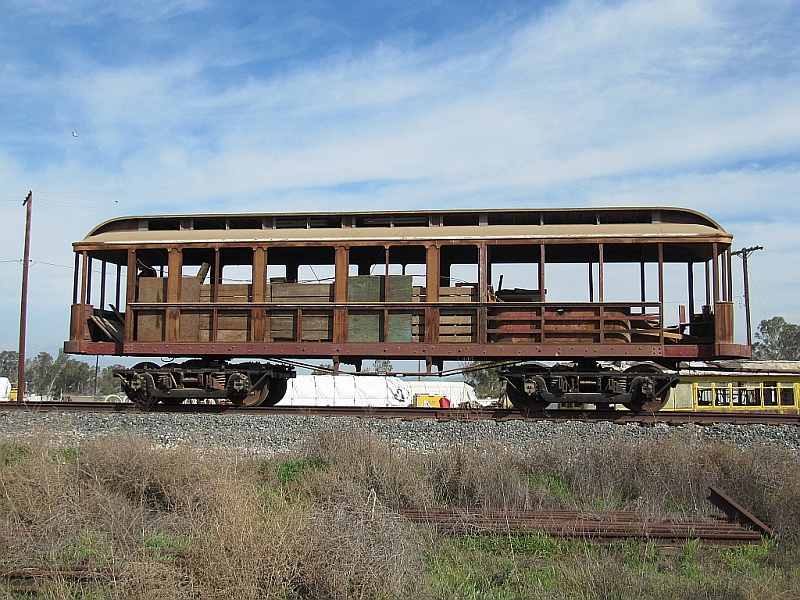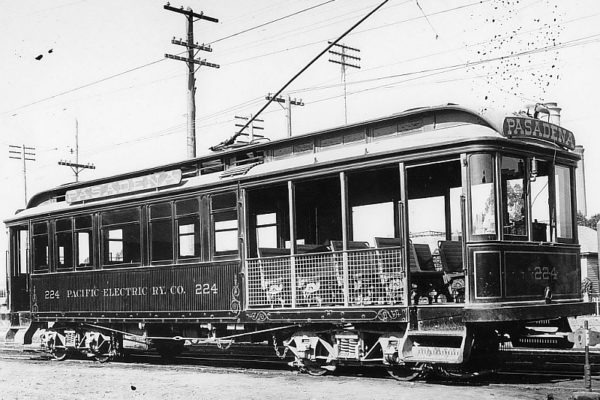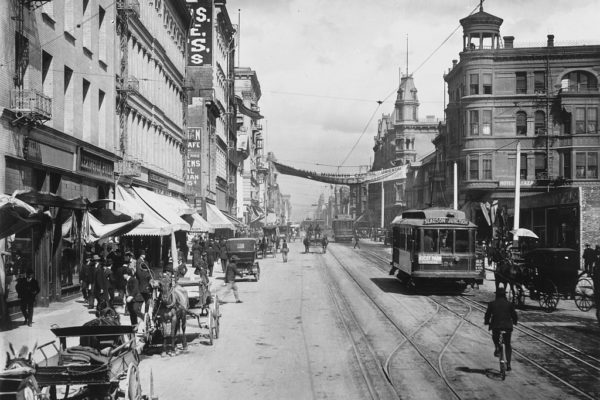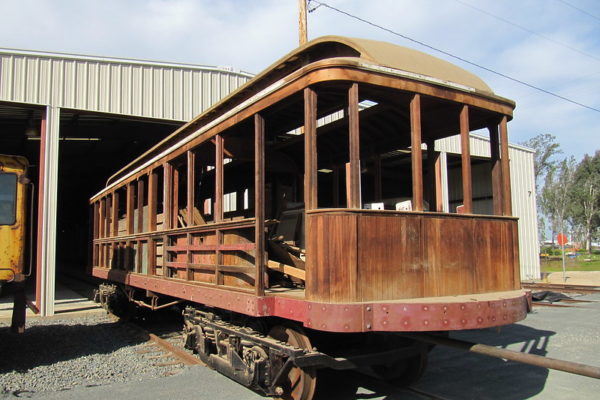In 1901, interests led by Henry E. Huntington reformed the Pacific Electric Railway. More cars were needed to supplement the existing fleet, especially considering construction was planned began on new interurban lines to Long Beach and Alhambra. Thirty new cars of wooden construction were ordered from the St Louis Car Company in October of 1901 as the new 200 class cars, numbered 200-229. Constructed in late 1901 and 1902, these were the first cars bought new by reformed Pacific Electric.
“Their design followed the customary Los Angeles & Pasadena and Los Angeles & Pacific type of intercity car: a large enclosed section taking up two thirds of the body, with a short open section at one end. The five window front end was retained, to become traditional with Huntington cars.” Ira L Swett, Interurbans Special 28
“In their new condition, these cars were 41’1” long, seated 42, used K-11 control, had the PE rigid bolster trucks and Christensen air brakes. Cars 200, 201 and 209 pioneered in having four motors with K-14 control; the others had but two motors. All motors were Westinghouse 38-B (50 hp). All cars were single unit.” Ira L Swett, Interurbans Special 28.
The new 200 class cars were the finest cars on the PE and were first used on the interurban lines to Pasadena and debuted service on the new lines to Alhambra and Long Beach after delivery in 1902.

